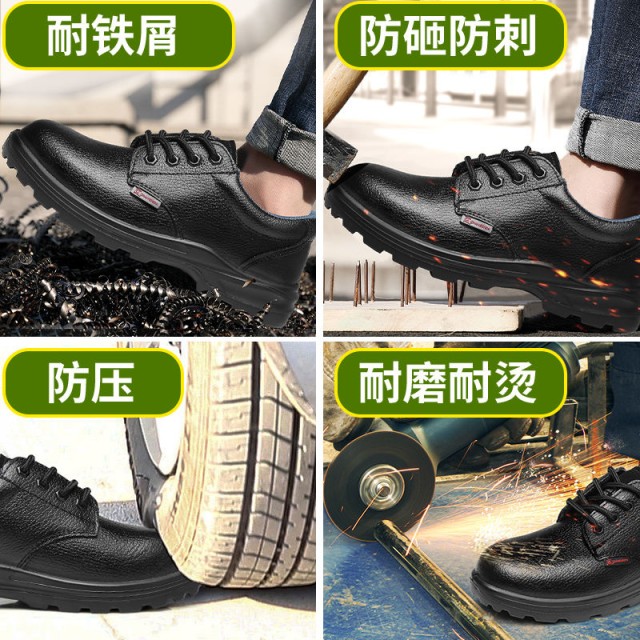Workplace safety begins from the ground up—literally. Every year, thousands of workplace injuries involve foot trauma, electrical incidents, or slips that could be mitigated with properly engineered safety boots. This guide breaks down how advanced materials, scenario-specific designs, and rigorous certifications work together to address distinct hazards, helping distributors and bulk buyers make risk-aligned purchasing decisions.
Workplace Hazards and Safety Boot Design
Electrical Hazards: Insulation and Dielectric Properties
Key Protection: Boots rated for electrical hazards (EH) prevent current flow through non-conductive soles and composite materials.
- Dielectric Insulation: EH-rated boots withstand voltages up to 600V in dry conditions, shielding wearers from common workplace circuits.
- Material Choice: Composite toe caps (e.g., fiberglass) avoid conductivity risks posed by steel toes.
Practical Insight: For utility workers or electricians, prioritize boots with ASTM F2413-18 EH certification—a non-negotiable for arc-flash environments.
Chemical Exposure: Material Resistance and Seam Construction
Key Protection: Chemical-resistant boots use impermeable materials and sealed seams to block splashes.
- Polyurethane (PU) vs. PVC: PU soles outperform PVC in oil-rich settings due to superior flexibility and abrasion resistance.
- Seamless Uppers: Molded designs minimize entry points for corrosive liquids.
Scenario Tip: In petrochemical plants, look for ASTM F2892-21 certification for acid/alkali resistance.
Physical Trauma: Toe Caps and Puncture-Resistant Layers
Key Protection: Reinforced toe boxes and midsoles deflect crushing impacts and sharp objects.
- Steel vs. Composite Toes: Steel offers higher crush resistance (e.g., ASTM F2413-18 I/75 for 75-lb impact), while composite is lighter and non-metallic.
- Puncture Plates: Kevlar or steel shanks stop nails or glass shards from penetrating the sole.
Did You Know? Over 15% of foot injuries result from punctures—a preventable risk with ASTM F2413-18 PR-rated boots.
Environmental Adaptability
Heat Resistance and Thermal Insulation
Key Protection: Boots for foundries or welding zones integrate heat-reflective layers and insulated linings.
- Outer Materials: Leather treated with fire retardants resists molten metal splashes.
- Thermal Barriers: Air-cooled midsoles reduce heat transfer in steel mills.
For Extreme Cold: Look for boots rated to -40°F with Thinsulate™ linings for Arctic logistics.
Slip Prevention: Tread Patterns and Oil-Resistant Soles
Key Protection: Deep treads and oil-resistant compounds enhance grip on slick surfaces.
- Tread Geometry: Chevron or lug patterns channel liquids away, reducing hydroplaning risks.
- TPU Soles: Thermoplastic polyurethane maintains traction in oily kitchens or garages.
Pro Tip: Boots with ISO 20347:2021 SRA/SRB ratings are tested on soapy and oily surfaces.
Certifications and Industry-Specific Standards
| Standard | Hazard Covered | Key Industries |
|---|---|---|
| ASTM F2413-18 | Impact/Puncture/EH | Construction, Utilities |
| ASTM F2892-21 | Chemical Resistance | Petrochemical, Manufacturing |
| ISO 20345:2021 | Basic Safety Requirements | General Industrial |
Why It Matters: Distributors should verify certifications match end-users’ operational risks—e.g., oil rigs demand ASTM F2892-21 compliance.
Empower Your Supply Chain with Risk-Specific Footwear
For distributors and bulk buyers, selecting the right safety boots isn’t just about compliance—it’s about delivering trusted protection to workers in high-risk sectors. 3515 partners with global brands to manufacture certified, hazard-tailored footwear that reduces workplace injuries while enhancing comfort.
Ready to equip your clients with boots engineered for their unique risks? [Contact 3515] to discuss scalable solutions for your inventory.
Related Products
- Durable Steel Toe Safety Boots Wholesale & Custom Manufacturing
- Wholesale Slip-On Safety Boots Manufacturer - Custom Puncture-Proof & Steel Toe
- Custom Wholesale Leather Safety Boots Direct Factory Manufacturing
- Wholesale Durable Safety Boots | Custom Steel Toe & Puncture-Resistant Manufacturing
- Wholesale Durable Safety Boots Manufacturer Customizable Steel Toe Work Boots
Related Articles
- How Safety Work Boots Engineer Protection: Features and Standards for Targeted Hazard Mitigation
- How to Reduce Steel Toe Boot Risks Without Compromising Workplace Safety
- How Modern Steel Toe Boots Achieve Safety Without Sacrificing Comfort
- Matching Men’s Work Shoe Safety Technologies to Workplace Hazards
- How Steel Toe Boots Combine Safety Compliance with All-Day Comfort



















